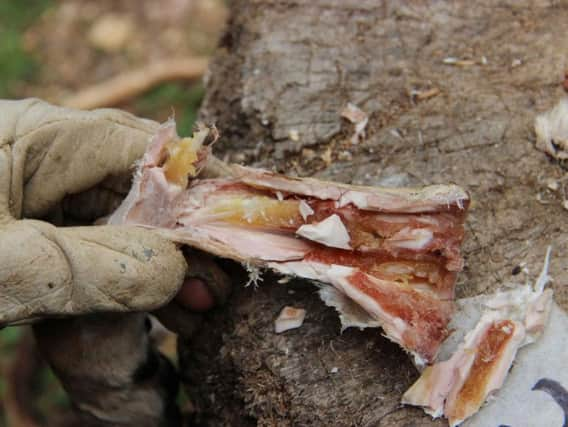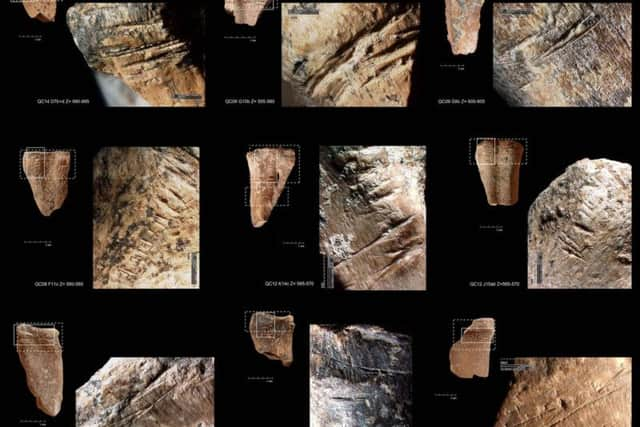Prehistoric humans stored bone marrow to eat like canned soup


It was previously thought that during this period, 400,000 years ago, humans consumed animal bone marrow as soon as they had stripped the carcass of the animal they had successfully hunted.
However, researchers from Tel Aviv University, in collaboration with scholars from Spain, have uncovered evidence of the very first example in the world of storage and delayed consumption of food.
Advertisement
Hide AdAdvertisement
Hide Ad

The prehistoric humans are thought to have then covered the bones with skin to aid their preservation so that they could store them for up to nine weeks and eat them in times of need.
Preservation
Scientists analysed chopping marks on the retrieved bone and found they did not correspond with those typically left when fresh skin is stripped to fracture bone during marrow extraction.
In addition, the researchers were able to work out the time scale of the preservation of the bones using chemical analyses of deer bone during a series of experiments.
"Until now, evidence has pointed to immediate consumption of marrow following the procurement and removal of soft tissues. In our paper, we present evidence of storage and delayed consumption of bone marrow at Qesem Cave."
Early behaviour
Dr Ruth Blasco, from TAU's Department of Archaeology, said: "This is the earliest evidence of such behaviour and offers insight into the socio-economics of the humans who lived at Qesem. It also marks a threshold for new modes of Paleolithic human adaptation."
Prof Barkai added: "The bones were used as 'cans' that preserved the bone marrow for a long period until it was time to take off the dry skin, shatter the bone and eat the marrow".
The study is published in the journal Science Advances.
